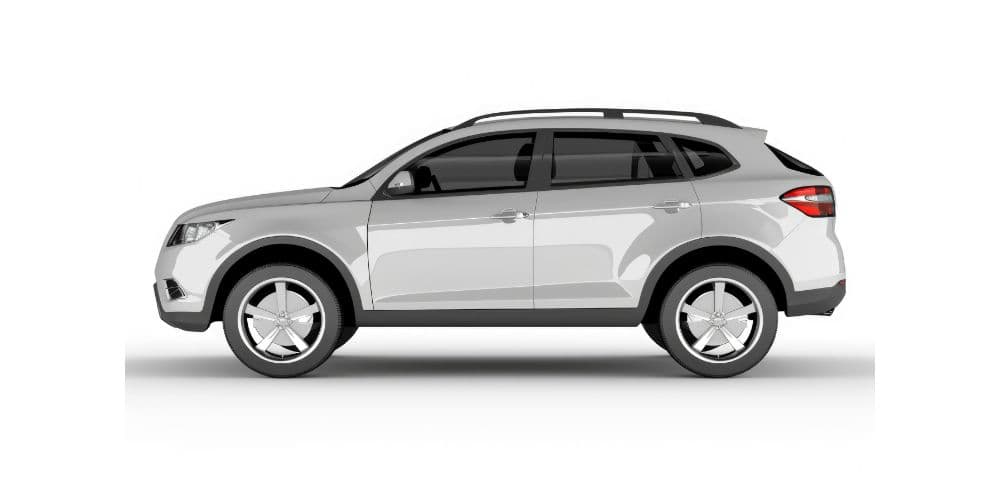
Atchafalaya Swamp & Cajun Villages Scenic Loop
Trip Snapshot
- Distance & Drive Time: ~100 miles round-trip loop, about 2.5–3 hours driving time (not counting stops). It’s an easy day trip looping east and south of Lafayette.
- Best Time to Visit: Spring (mild weather, wildlife active) and fall (pleasant temps, fall festivals). Winter is cool and good for birding. Summer can be very hot and humid; if visiting then, plan indoor breaks midday and pack bug spray for evenings.
- Ideal For: Nature lovers, photographers, and culture explorers. Great for families and anyone who wants an authentic peek into Cajun life from swamp ecology to historic small towns.
- Route Summary: Head east on I-10 from Lafayette to Breaux Bridge. Explore the Atchafalaya Basin area, then double back on scenic LA-31 winding along Bayou Teche through St. Martinville and New Iberia. Return north via LA-182/US-90 through sugar cane country. It’s a relaxed loop with plenty of opportunities to stop and soak in the scenery.
- Top Highlights: Spotting alligators and herons on an Atchafalaya swamp tour, the famous Evangeline Oak in St. Martinville (of Longfellow’s Evangeline lore), touring the TABASCO® hot sauce factory on Avery Island, and savoring fresh boudin and crawfish in the “Crawfish Capital” of Breaux Bridge.
Route Overview
This loop packs a lot into one day. Depart Lafayette heading east on I-10, but don’t blink in just about 35 miles you’ll reach Breaux Bridge, the first stop. Known as the “Crawfish Capital of the World,” Breaux Bridge offers a perfect warm-up, perhaps with a coffee and sweet beignet from a local café. From there, venture a few miles further to the Atchafalaya Basin. Exit 121 leads to the Atchafalaya Welcome Center at Butte La Rose, where a boardwalk and viewing area let you gaze out over the swamp’s endless green tapestry. The sheer expanse of the Atchafalaya nearly 15 miles wide of bayous, lakes, and marsh is humbling. Take a deep breath of swamp air; it’s fresh with a tinge of cypress and muddy water.
For those craving adventure, this is the place for an airboat or swamp tour. Operators like the Atchafalaya Basin Swamp Tour (official tourism listings available) can whisk you into remote bayous where moss-draped trees and sunning gators reign. Morning is a great time for wildlife you might see egrets, great blue herons, even bald eagles. As you glide through glassy water alleys amid ancient cypress groves, you’ll feel a world away from the highway.
After experiencing the wild heart of the swamp, double back to Breaux Bridge and pick up LA-31 South, a two-lane road that lazily parallels Bayou Teche. Now you’re cruising the Bayou Teche Scenic Byway, a route known for its cultural riches. The bayou (a slow-moving waterway) snakes through lush countryside and cute villages. Your next big stop is St. Martinville, one of Louisiana’s oldest towns. As you roll into St. Martinville under centuries-old oak trees, it’s like stepping back in time. Park near the Evangeline Oak Park, where a legendary live oak tree gnarled and mossy stands on the bayou’s bank. This spot is famous from Henry Wadsworth Longfellow’s poem “Evangeline,” symbolizing the Acadian lovers’ parting. There’s even a statue of Evangeline here. Across the street, peek into the little Museum of the Acadian Memorial and African American Heritage Museum, which together tell the story of the diverse peoples (Acadian/Cajun and Creole) who made this region home.
Leaving St. Martinville, continue down LA-31 as it merges with LA-182 toward New Iberia. You’re now in Iberia Parish, a land of sugar cane fields and Victorian-era towns. New Iberia’s Main Street is a charmer consider stopping at Shadows-on-the-Teche, a 1834 plantation home with lush gardens on the bayou. It’s a National Historic Site that offers guided tours, giving insight into life on a 19th-century sugar plantation.
Just a bit further south looms Avery Island a must-do detour (about 7 miles one-way) for spice enthusiasts. Avery Island is the birthplace of TABASCO® hot sauce. Driving over the little bridge onto the island (actually a salt dome) you’ll notice the elevation change it’s like a jungle oasis rising out of flat marsh. At the Tabasco Factory & Museum, you can take a self-guided tour of how this iconic sauce is made, from pepper mash aging in white oak barrels to the bottling line. The air smells faintly of vinegar and peppers it’ll clear your sinuses! Don’t miss sampling the various hot sauce flavors in the Tabasco Country Store, and yes, they even have Tabasco ice cream for the daring. Adjacent to the factory, the Jungle Gardens and Bird City wildfowl refuge are worth a look if time permits a beautiful drive-through garden with roaming deer and a large egret rookery (especially active in spring).
After heating up on Avery Island, head back to New Iberia for the final leg. LA-182 (the old Highway 90) will take you west then north through small towns like Jeanerette, known for its sugar cane farming and, interestingly, a museum dedicated to Louisiana’s love affair with sugar. As you drive through Jeanerette’s oak-shaded streets, imagine the old steamships once plying Bayou Teche collecting sugar and molasses. By now, the afternoon light might be golden over the sugar cane fields. It’s a straight shot from here back toward Lafayette LA-182 will meet up with US-90 for an easy return. You’ll arrive back in Lafayette around dinner, with a new appreciation for Acadiana’s natural and cultural wealth.
Top Stops & Experiences
- Atchafalaya Basin & Welcome Center Start your adventure at the I-10 Atchafalaya Welcome Center. Knowledgeable staff, interpretive displays, and even a short nature trail provide a great introduction to the swamp’s ecology. From here, consider booking a guided swamp tour (several operate nearby in Henderson). Skimming through moss-laden bayous, you’ll encounter wildlife like alligators, turtles, and countless water birds in North America’s largest river swamp. It’s an unforgettable up-close encounter with the wild side of Louisiana. (Tour info: Atchafalaya.org or local outfitters’ official sites)
- St. Martinville & Evangeline Oak This historic little town on Bayou Teche is often called the “Petit Paris” of the South for its French influence. The Evangeline Oak Park is free and always open stand under the massive live oak and read the poem excerpts about Acadian lovers Evangeline and Gabriel. Just steps away is the Acadian Memorial (honoring the Acadian exiles) and St. Martin de Tours Catholic Church, founded in 1765. St. Martinville’s downtown has quaint shops and the Longfellow-Evangeline State Historic Site nearby (with an early Creole plantation home to tour). It’s a serene spot brimming with history and romance.
- Avery Island TABASCO® Factory Tour Smell the peppers and see how the world-famous hot sauce is made! On Avery Island, the Tabasco brand offers a self-guided factory tour and museum (small admission fee; official Tabasco.com tickets page). You’ll walk through displays of the pepper mash barrels, the blending process, and a miniature bottling line in action. The museum features artifacts from the McIlhenny family, who’ve been making Tabasco here since 1868. After the tour, stroll through the Jungle Gardens (open to drivers and walkers) to spot alligators and exotic plants all part of the McIlhenny legacy on the island. It’s a unique mix of industrial heritage and natural beauty.
- Shadows-on-the-Teche, New Iberia Overlooking Bayou Teche, this antebellum home (circa 1834) is a beautifully preserved plantation house museum. Take a guided tour to learn about the Weeks family who lived here and hear stories of the enslaved people who worked the property tours provide a balanced history. The grounds are gorgeous, draped in oaks and azaleas. It’s operated by the National Trust for Historic Preservation (so an official site with excellent guides). Shadows offers a window into the gentle elegance and harsh realities of 19th-century life in south Louisiana.
- Bayou Teche Scenic Byway Drive Simply driving along Bayou Teche is a treat in itself. This route is part of the Atchafalaya National Heritage Area and threads through towns like Breaux Bridge, St. Martinville, Loreauville, New Iberia, and Jeanerette. Roll down your windows and enjoy the view of slow-moving bayou waters, weathered boat docks, and children fishing off the banks. You’ll pass old Cajun homesteads, fields of sugar cane, and perhaps a roadside produce stand or two (stop if you see one for fresh Creole tomatoes or sweet dough pies). Every bend of Bayou Teche has a story this waterway once carried steamboats and now hosts paddleboarders and the annual “Tour du Teche” kayak race. It’s the backbone of these Cajun communities.
Where to Eat & Stay
- Breakfast in Breaux Bridge Fuel up at Café Sydnie Mae or Buck & Johnny’s in Breaux Bridge. Café Sydnie Mae (in a historic old bank building) serves up fluffy biscuits and Southern breakfasts. Buck & Johnny’s is beloved for its Zydeco Brunch on weekends live accordion and fiddle music while you feast on pain perdu (French toast) and couche-couche (a traditional Cajun cornmeal cereal). Both are on Breaux Bridge’s charming main drag (Bridge Street) and have official sites for menus and hours.
- Lunch along the Route If you’re near St. Martinville around lunch, consider Le Café Josephine (in nearby Sunset) for an authentic plate lunch, or grab a po’boy in New Iberia at Victor’s Cafeteria (a local institution where author James Lee Burke’s detective character Dave Robicheaux often eats and yes, it’s real!). If you detour to Avery Island, the on-site Restaurant 1868 next to the Tabasco factory offers Cajun favorites like boudin, jambalaya, and of course dishes spiked with Tabasco sauce (officially run by Tabasco, so it’s the spot for a spicy lunch).
- Afternoon Snack Don’t miss trying boudin a Cajun sausage of pork and rice. A great stop is Legnon’s Boucherie in New Iberia (an old-time butcher shop) or Bourque’s Supermarket in Port Barre if your loop takes you that way. Pick up some boudin links or cracklins (crispy pork skins) they make for the ultimate road snack. (These local markets have their own websites or Facebook pages for info.) Also, if you’ve got a sweet tooth, LeJeune’s Bakery in Jeanerette has been baking French bread and ginger cakes for over a century worth a visit (closed Sundays).
- Dinner in Lafayette Back in Lafayette by evening, treat yourself to a well-earned Cajun dinner. Prejean’s Restaurant (north Lafayette, official site) is famous for its gumbo and stuffed duck, often with live Cajun music playing. Or head to Bon Temps Grill for modern Cajun/Creole cuisine (think smoked duck gumbo or shrimp and grits). For a truly rustic experience, drive a few minutes south to Randol’s in Broussard a dance hall/restaurant where you can eat fried catfish and then join locals dancing Zydeco. After a day on the road, a cold Abita beer and some foot-tapping music will hit the spot.
- Where to Stay This loop can be done in one day, so many travelers just return to their Lafayette hotel. But if you’d like to slow down and soak up more, consider an overnight in one of the small towns. Old Castillo Bed & Breakfast in St. Martinville is a lovely 1820s house on Bayou Teche (with views of the Evangeline Oak) a romantic spot with an official B&B site for booking. New Iberia also offers some B&Bs, like Estorge-Norton House, in its historic district. For something truly unique, Rip Van Winkle Gardens on Jefferson Island (near Avery Island) has a few cottages you can rent amid semitropical gardens peacocks on the lawn and Lake Peigneur sunsets make it magical (official site available). Wherever you stay, you’ll find warm Cajun hospitality expect hearty breakfasts and hosts eager to share local tips.
Practical Tips
- Road Conditions: Much of this loop is on rural two-lane highways (LA-31, LA-182). They are generally well-maintained but watch for occasional slow farm vehicles or trucks, especially during sugar cane harvest season in fall (you might literally follow a tractor hauling cane to the mill in Jeanerette!). Don’t rush embrace the slower pace. Also note, after heavy rains, some low-lying bayou roads can get water on the edges; exercise caution and avoid driving through any standing water.
- Navigation: Cell service is fairly reliable in the towns, but can be spotty in remote swamp areas. It’s wise to have a paper map or an offline map of Louisiana loaded, just in case. The route itself is straightforward: I-10 to exit 109 or 115 for Breaux Bridge, then LA-31/LA-182. Signage for Avery Island and major towns is clear. Still, a GPS will help, especially navigating small town streets to find specific sites (like the Tabasco Factory or the backroads to Lake Martin).
- Wildlife & Weather: In warmer months, mosquitoes and gnats are common near the water at dawn and dusk. Bring insect repellent so you can comfortably enjoy outdoor stops (especially if walking the boardwalk at the swamp or touring Jungle Gardens). If you take a swamp tour, wear sunscreen or a hat the sun reflecting off water can give a surprise burn. Always keep a bit of water and maybe a small ice chest in the car; Cajun Country gets hot. If visiting in spring, an afternoon rain shower is normal they usually pass quickly. Just pull into a café for a coffee au lait and wait it out.
- Local Etiquette: Cajun and Creole communities are famously friendly. Don’t be surprised if locals strike up a conversation at the café or invite you to dance if you drop by a Zydeco brunch. A simple “thank you” or “merci” (French is woven into local phrases) goes a long way. While English is universal, you might hear Cajun French accents or even folks speaking Creole French among elders. It’s part of the charm! Take time to linger and chat the stories people tell can be trip highlights themselves.
- Timing Your Day: Start early to maximize stops. Many attractions (Tabasco tour, Shadows-on-the-Teche, etc.) have last entry times around mid-afternoon (often 4 PM). Plan to reach Avery Island by early afternoon so you aren’t rushed; they close around 5 PM. If you want to catch Zydeco music, note that some places have specific times (e.g., Saturday morning Zydeco breakfast, or evening dance hall schedules). Check the official tourism websites or call ahead if there’s a must-do event on your list.
Rentals & Logistics
This scenic loop is off the typical tourist path having your own car is essential. Luckily, Lafayette has plenty of rental options to get you on the road. Reserve your rental car in Lafayette (either at the airport or a local agency) the day before so you can set out first thing. Most rentals come with unlimited mileage, and 100 miles isn’t much anyway you’ll likely spend more on delicious food than on gas! Be sure to fill up the tank in Lafayette or Breaux Bridge; gas stations get sparser in remote areas like around Lake Fausse Pointe.
Pack a day bag with binoculars (for bird watching), a camera, and maybe a small cooler for cold drinks and any foodie finds (you will be buying pralines, hot sauce, or meat pies along the way trust us). Dress comfy and casual this is a down-home journey, no dress code anywhere.
When you’re ready to roll, pick up your rental car and hit the road. This loop is all about taking your time, stopping often, and experiencing Cajun Country with all your senses. So turn on some Cajun tunes (KBON 101.1 FM is a great local radio station) and let the rhythm of the bayou drive your day. By evening, you’ll be back in Lafayette with stories and maybe a little lagniappe (that means “a little something extra”) from your travels. All that’s left is to plan your next Acadiana adventure and return your trusty rental car, of course, with a trunk full of treasures and a heart full of Louisiana. Happy travels or as locals say, bon voyage et bon appétit! Reserve that car, and laissez les bons temps rouler!
Our Most Popular Vehicles



